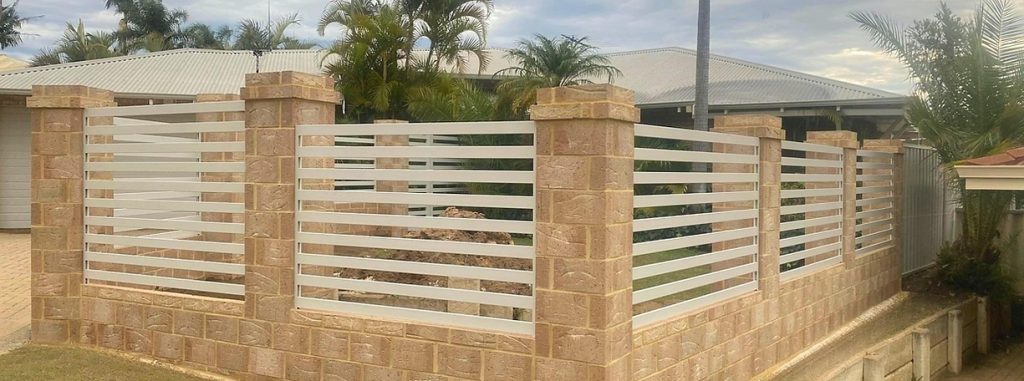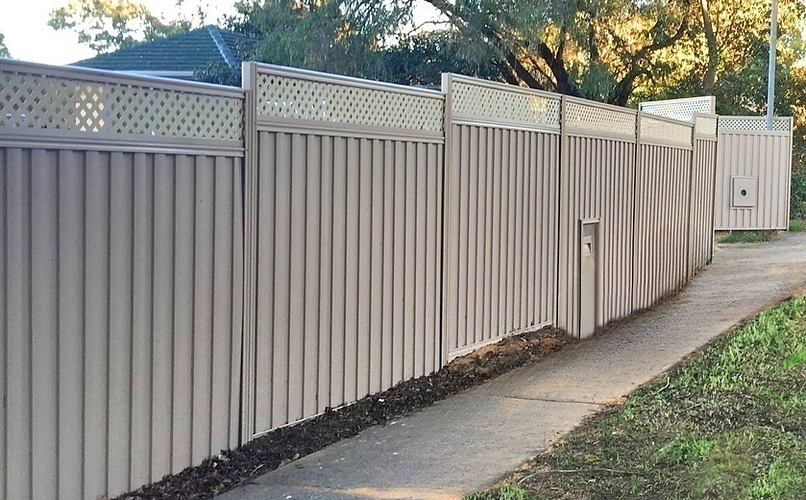When selecting fencing for areas prone to strong winds, such as coastal regions like Rockingham, choosing materials and designs that provide wind load resistance is crucial. Rockingham fencing needs to withstand high winds while maintaining structural integrity. In this article, we will explore the factors that influence the durability of fencing in high-wind conditions, focusing on post installation, reinforcement techniques, and optimal spacing.
Understanding Wind Load in Fencing
Wind load refers to the force exerted on a structure by wind. Fences, being vertical structures with surface area exposed to winds, must be able to resist these forces to avoid collapse or damage. For Rockingham fencing, where coastal winds can be particularly strong, ensuring that the fencing design can handle varying wind speeds is essential for longevity and safety.
Material Selection for Wind-Resistant Fencing
The type of material used in fencing plays a significant role in how well it can withstand high winds. Common materials used in Rockingham fencing include:
- Aluminium Fencing: Lightweight and resistant to corrosion, aluminium fencing is a good choice for coastal areas. It has a high strength-to-weight ratio, making it capable of withstanding wind loads without excessive strain on the posts and foundation.
- Steel Fencing: Strong and durable, steel is often favoured for high-wind areas. When properly galvanised, steel fencing can resist corrosion while offering excellent structural strength against strong winds.
- Colorbond Fencing: A popular choice in Australia, Colorbond steel fencing offers both durability and aesthetic appeal. Its smooth surface reduces wind resistance, but proper installation is critical to prevent it from being uprooted during storms.
- Timber Fencing: Timber fencing is less suitable for high-wind areas due to its higher susceptibility to rot and damage over time. However, treated hardwood with reinforced posts can still be viable if aesthetic appeal is important.
Each material has its pros and cons in high-wind situations, and the decision should be based on the wind conditions and long-term durability needs.

Importance of Post Installation
The posts are the foundation of any fence, and they bear the brunt of the wind load. For Rockingham fencing installations, proper post installation is the most critical aspect of ensuring wind load resistance.
- Depth of Post Holes: Posts must be set deep enough into the ground to ensure stability. In areas with high winds, fence post holes should be at least one-third the height of the fence to provide a solid anchor.
- Post Material: Steel or reinforced concrete posts are recommended for high-wind areas, as they provide superior strength and resistance to movement under load. Timber posts, while common, may require additional reinforcement such as concrete footings to resist wind pressure.
- Concrete Footings: Setting fence posts in concrete ensures that they remain stable under the stress of wind. The concrete should extend below the frost line and slope outward at the top to allow water to drain away from the post, preventing erosion around the base.
Reinforcement Techniques
Reinforcement techniques are essential for ensuring that fencing remains intact in strong winds. For Rockingham fencing, several methods can be employed to enhance structural integrity.
- Bracing: Braces can be added to fencing panels and posts to distribute wind loads more evenly across the structure. Diagonal bracing between posts or panels reduces the risk of the fence bending or breaking during wind gusts.
- Post Spacing: Reducing the spacing between fence posts increases the number of anchor points, which helps distribute wind loads more effectively. In high-wind areas, posts should be spaced closer together than in low-wind zones to reduce panel sway.
- Heavier Panels: Opting for heavier fencing panels or adding reinforcement strips can help the fence resist wind. This works by preventing panels from flexing too much, which reduces the risk of structural failure.
Optimal Spacing for Wind Flow
Proper spacing between fence panels or slats can significantly improve wind resistance. Solid fences, though effective at providing privacy, are more likely to be damaged by strong winds because they block airflow entirely. On the other hand, fences with small gaps allow wind to pass through, reducing pressure on the fence.
- Semi-Permeable Designs: Slat or picket fencing with small gaps between the slats allows some wind to pass through, reducing the wind load on the overall structure. This design is highly effective in areas with strong winds and is a popular option for Rockingham fencing where aesthetics meet practicality.
- Open Designs: Open fencing designs, such as wire mesh or lattice, have little surface area for wind to push against, making them the most wind-resistant. However, they offer less privacy and security than solid or semi-permeable fences.
- Angled Slats: Some fencing designs use angled slats that deflect wind upwards or downwards, minimising wind pressure without sacrificing privacy or aesthetic appeal.
Conclusion
Choosing the right fencing for high-wind areas like Rockingham requires careful consideration of materials, installation techniques, and design. Aluminium, steel, and Colorbond fences offer excellent durability and resistance to corrosion, while proper post installation and reinforcement techniques ensure that fences remain stable during high winds. Additionally, opting for semi-permeable designs that allow wind to pass through reduces wind load and helps maintain the fence’s integrity.
Rockingham fencing installations that factor in wind load resistance will not only withstand the coastal winds but also provide long-term security and aesthetic value. Properly installed, reinforced, and spaced fences ensure that your investment is protected from the elements for years to come.

